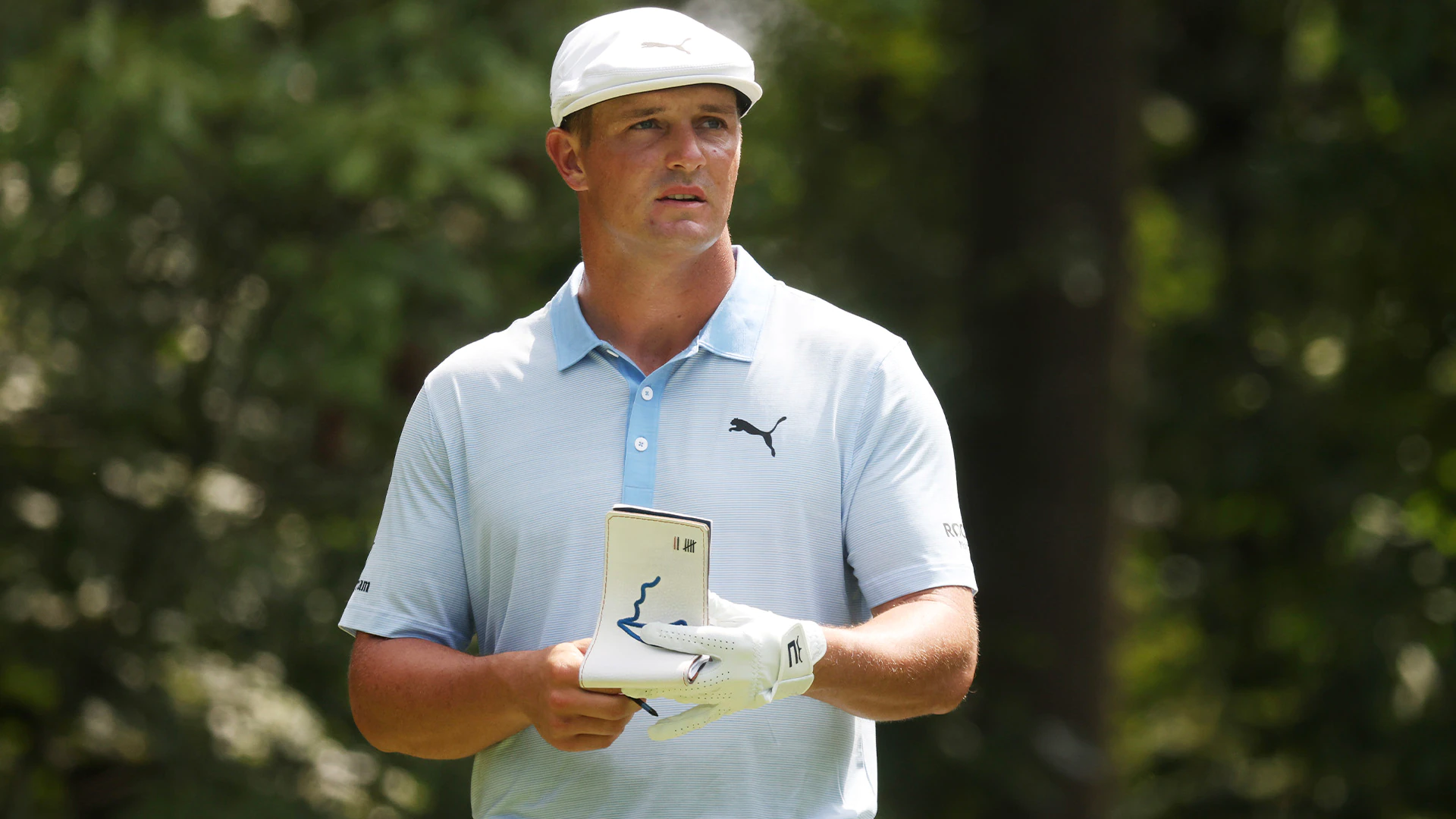Skill, Judgment, Feel: PGA Tour Players Adjusting Without Green-Reading Books

Only once in his career has Kevin Na cracked open of those detailed green-reading books.
It was last year, on the 17th green at Waialae Country Club, where Na needed a birdie-eagle finish to shoot 59 in the third round of the Sony Open. Sizing up his 10-footer, he glanced at the book, adjusted his read, made the stroke and … missed. He settled for 61 but eventually won the event.
“It didn’t work out too well,” Na recalled Thursday, “so that was the last time I saw it.”
Of course, Na’s longtime caddie, Kenny Harms, routinely used the book to verify his initial read – or at least he used to, before the PGA Tour adopted the local rule that cracked down on the green-reading materials.
Thursday’s opening round of the Sentry Tournament of Champions represented the first day of the Tour’s new normal, with players and caddies allowed only to use committee-approved books that provide general information on slopes and other features. The rule, which went into effect Jan. 1, was designed to ensure that reading putts was the product of skill, judgment and feel, in addition to quality preparation, and not just provided material.
Though handwritten notes will be allowed, that information needs to be limited to observations made while on the course or during the tournament telecast. No devices can be used to obtain the data, either.
Most players interviewed after the opening round – those who happened to play well early at Kapalua – applauded the decision, which was approved by the PGA Tour Policy Board.
“I probably bury my head in them too much as it is,” said Joel Dahmen, who won the Puntacana Championship last year. “I don’t use them at home and I putt OK, so there’s no real reason to have them out here for me anyway.”
Said Talor Gooch, the current FedExCup leader: “I’m excited for it. I use the green-reading books, but I think it was a detriment at times, and I played my best when I think less, I calculate less. I try to be reactive, and so having no greens books is great for that.”
World No. 2 Collin Morikawa described the shift away from green-reading books as “huge,” considering he’d been using them extensively over the past several years, even while in college at Cal. Morikawa and Brooks Koepka noted how they used the books to read putts, sure, but also to identify where to land approach shots given the green’s slopes and contours.
The new rule puts the onus on the player and caddie to prepare in good faith, without any information transferred from their old books. How this will be enforced remains to be seen. Will a Tour rules official comb through a player’s notes to confirm their legitimacy? Will a player snitch on his peer if he’s spotted out late in practice with a level? Will the first player to grind to a halt on the greens, head buried in his book, immediately draw suspicion?
One thing seems certain: Caddies will be tasked with even more work in the lead-up to events. Rather than arriving to a familiar venue on Tuesdays, perhaps they get into town on Mondays this year and begin mapping out the green complexes.
“It’s a little more work for the caddie on Tuesday and Wednesday for them to get the slopes and the grain out there,” Dahmen said.
The player who would seem to be most affected by the new rule is Bryson DeChambeau. It was his methodical approach on the greens that first drew the ire of Koepka in 2019, and the famously data-driven DeChambeau has been known to spend hours each week with various devices and aids. Though he ranked as a top-35 putter on Tour each of the past four seasons, DeChambeau’s critics have been quick to point out that he doesn’t yet own a top-10 finish at the Masters, the only tournament that doesn’t permit the use of the greens books. At the 2020 Masters, he admitted that not having the books makes it “a lot harder.”
“At the end of the day, I still go based off of my intuition most of the time,” he said then. “I look at something, ‘OK, I think it looks a little like this.’ The times where I’ve putted best have been where my intuition is matched up with reality, and what it’s actually doing because sometimes (the books) can be wrong.”
DeChambeau, who opened with a 4-under 69 Thursday at Kapalua, has not yet spoken to the media this week.
Some of the best putters on Tour – guys like Na and Jordan Spieth and Cameron Smith – said they were looking forward to seeing if they have even more of an advantage on the greens in 2022, post-rules change.
“I think that, to me, putting you have to read it right, you have to put a stroke on it, and you have to hit it with the right speed,” Spieth said. “I thought with the green-reading materials it took one of those three skills away from it, and I think that it’s a skill that I would say is an advantage of mine, and so I’m excited to see what it can mean as far as strokes gained compared to the field on the greens.”
